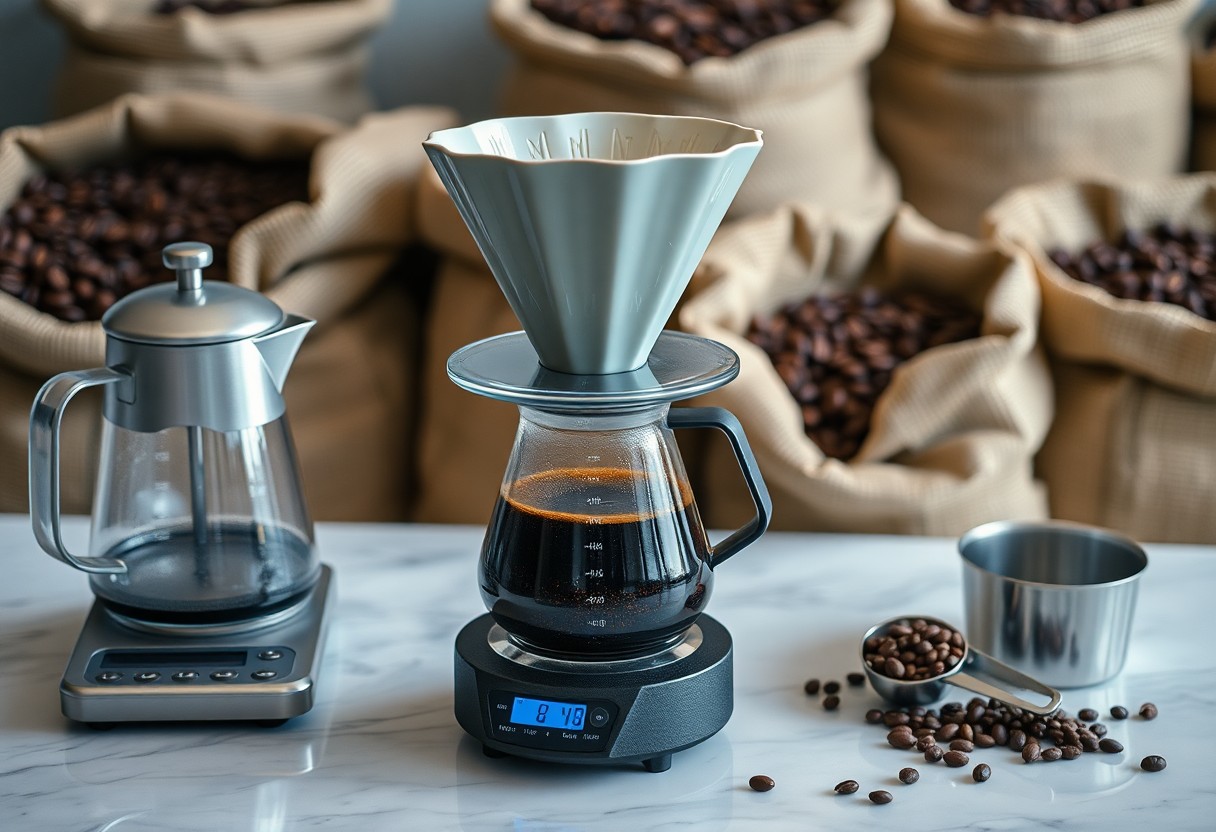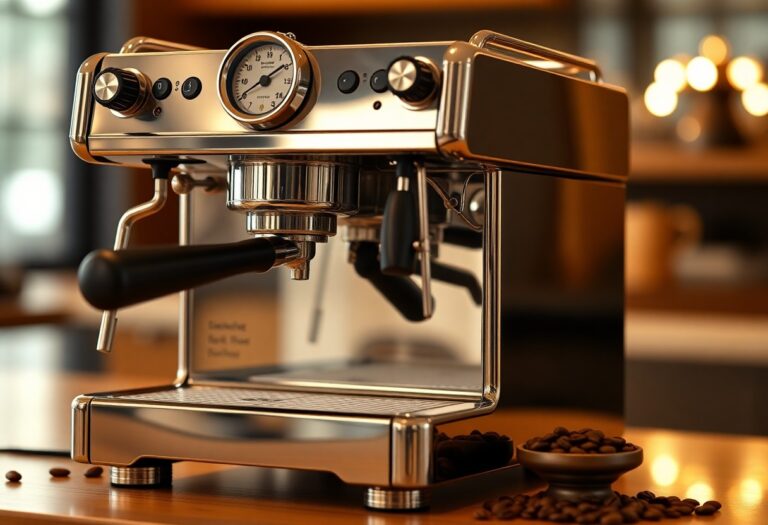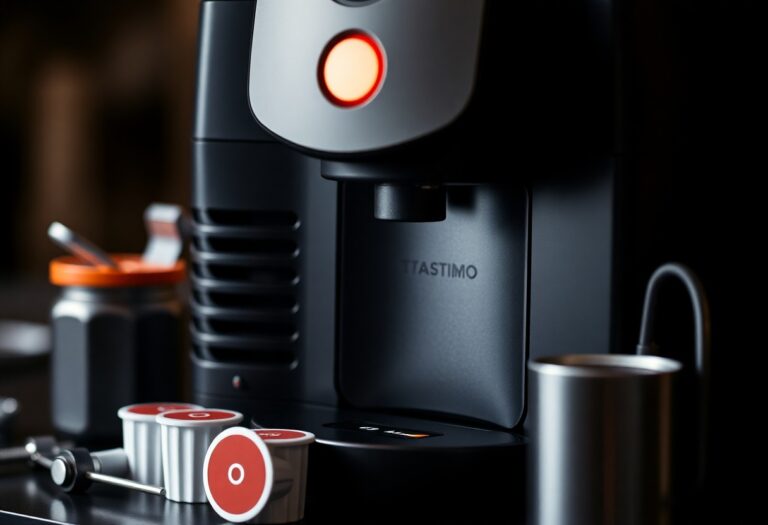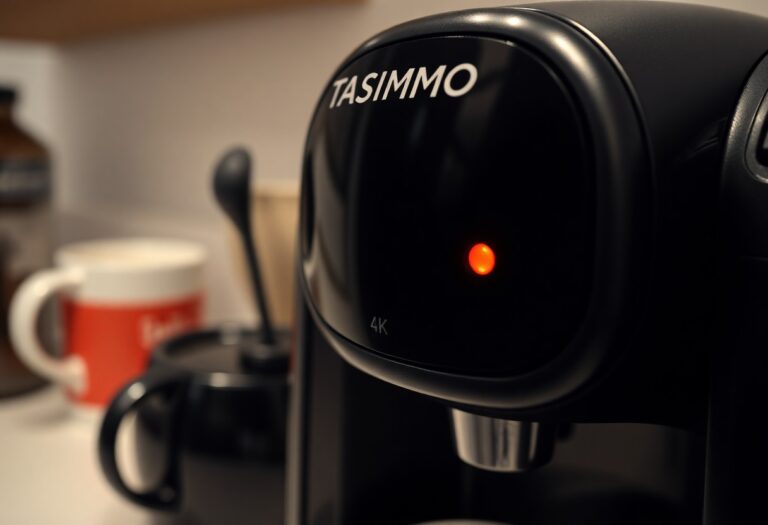What is a Pour Over Coffee Machine – Manual Brewing System
Coffee enthusiasts often turn to the pour over coffee machine for a simple yet effective way to brew their favorite beverage. This manual brewing system allows you to control the brewing process, ensuring that every cup is tailored to your taste. With a pour over setup, you can achieve a more flavorful and aromatic cup, as it highlights the unique characteristics of your beans. Moreover, it requires minimal equipment, making it an accessible option for both beginners and seasoned brewers looking to elevate their coffee experience.
Key Takeaways:
- A pour over coffee machine allows for manual brewing, giving users control over factors like water temperature and flow rate.
- This brewing method typically results in a cleaner and brighter cup of coffee compared to other methods, thanks to its paper filter system.
- Pour over coffee can enhance the unique flavor profiles of different coffee beans, making it a popular choice among coffee enthusiasts.
- Most pour over setups are relatively simple and require minimal equipment, often consisting of a dripper, filter, and a carafe or mug.
- This brewing technique encourages mindfulness and a more engaging coffee-making experience, as it requires focus on each step of the process.
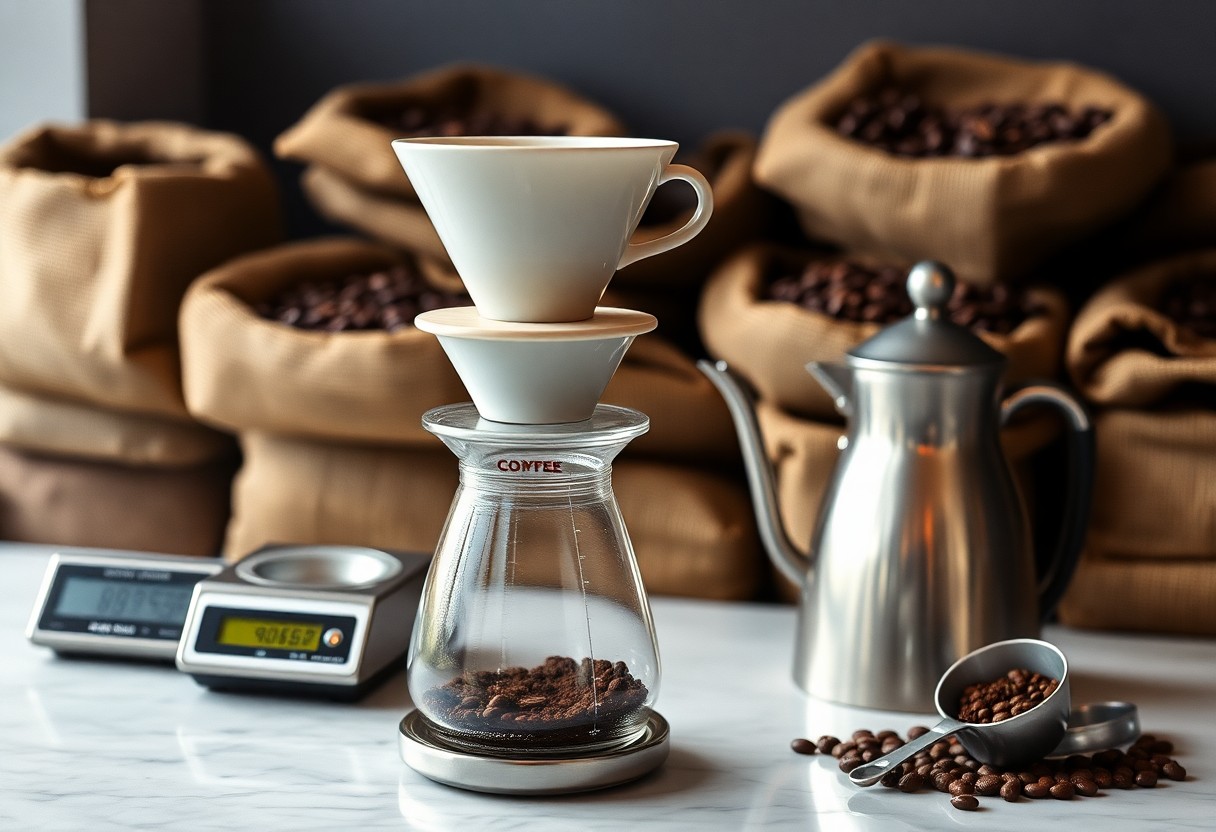
The Art of Brewing: What Sets Pour Over Apart
Pour over coffee stands out in the coffee world for its combination of precision and personalization. Unlike automatic brewing methods, pour over requires your direct involvement, allowing you to manipulate every variable, such as water temperature, grind size, and pouring technique, for a truly customized brew. This manual process fosters a deeper connection to your coffee-making ritual, enhancing not only the flavor but also the experience of savoring each cup.
The Ritualistic Process: Benefits of Manual Control
Engaging in the pour over method transforms coffee brewing into a meditative experience. You gain full command over the pour rate, timing, and even water temperature, enabling you to adapt to your specific taste preferences. This level of control can lead to discovering a newfound appreciation for the intricacies of your chosen coffee beans, all while creating a moment of peace amidst the chaos of daily life.
Flavor Profile: How Brewing Method Impacts Taste
The impact of brewing method on coffee flavor is profound. Pour over techniques allow for an even extraction of flavors, resulting in a clean, complex cup that highlights the nuances of your beans. The slower flow of water, combined with your control over variables, ensures that you can coax out the fruity, floral, or chocolate notes specific to each coffee variety.
By carefully controlling the brew time and water temperature during the pour over process, you unlock a full spectrum of flavors that other brewing methods often miss. For instance, using water at higher temperatures can extract more oils and acids, enhancing the body and brightness of your coffee. Conversely, a lower temperature may yield a sweeter, smoother cup. This precision directly impacts your drinking experience, allowing you to tailor each brew to your palate, whether you prefer brighter notes or a balanced profile. Each cup can be an exploration, revealing different taste characteristics depending on how you brew it.
Essential Gear: Demystifying the Components of a Pour Over System
Understanding the necessary components of a pour over system can enhance your brewing experience. Each element plays a critical role in shaping the final taste of your coffee, from the dripper itself to the kettle you choose. By familiarizing yourself with the gear, you can elevate your manual brewing to new heights, ensuring a delightful coffee ritual every time.
Key Tools: Pour Over Drippers, Kettles, and Filters Explained
A successful pour over requires three key tools: the dripper, kettle, and filters. The pour over dripper comes in various designs, such as cone-shaped and flat-bottomed, affecting water flow and extraction. The kettle should have a gooseneck spout for precision pouring, allowing you to control the flow rate. Lastly, the filters remove any sediment and oils, impacting both flavor clarity and strength.
Choosing the Right Coffee: Bean Selection and Grind Size
Your choice of coffee beans and the corresponding grind size significantly influence your pour over results. Opt for high-quality, fresh beans for the best flavor—look for single-origin varieties that appeal to your taste. The grind size also matters; a medium-coarse grind typically works best, resembling the texture of sea salt, ensuring optimal extraction without over or under brewing.
Experimenting with different coffee beans and grind sizes allows you to discover flavors and nuances unique to each brew. For instance, an Ethiopian Yirgacheffe bean, known for its floral notes, shines when brewed with a slightly coarser grind, while a Colombian coffee may flourish with a finer consistency. Adjusting grind size can drastically change your brew’s extraction; finer grounds increase surface area, leading to a bolder flavor, whereas coarser grinds yield a smoother profile. Keep a consistent brewing ratio of about 1:15 (coffee to water) as you experiment to find your ideal cup.
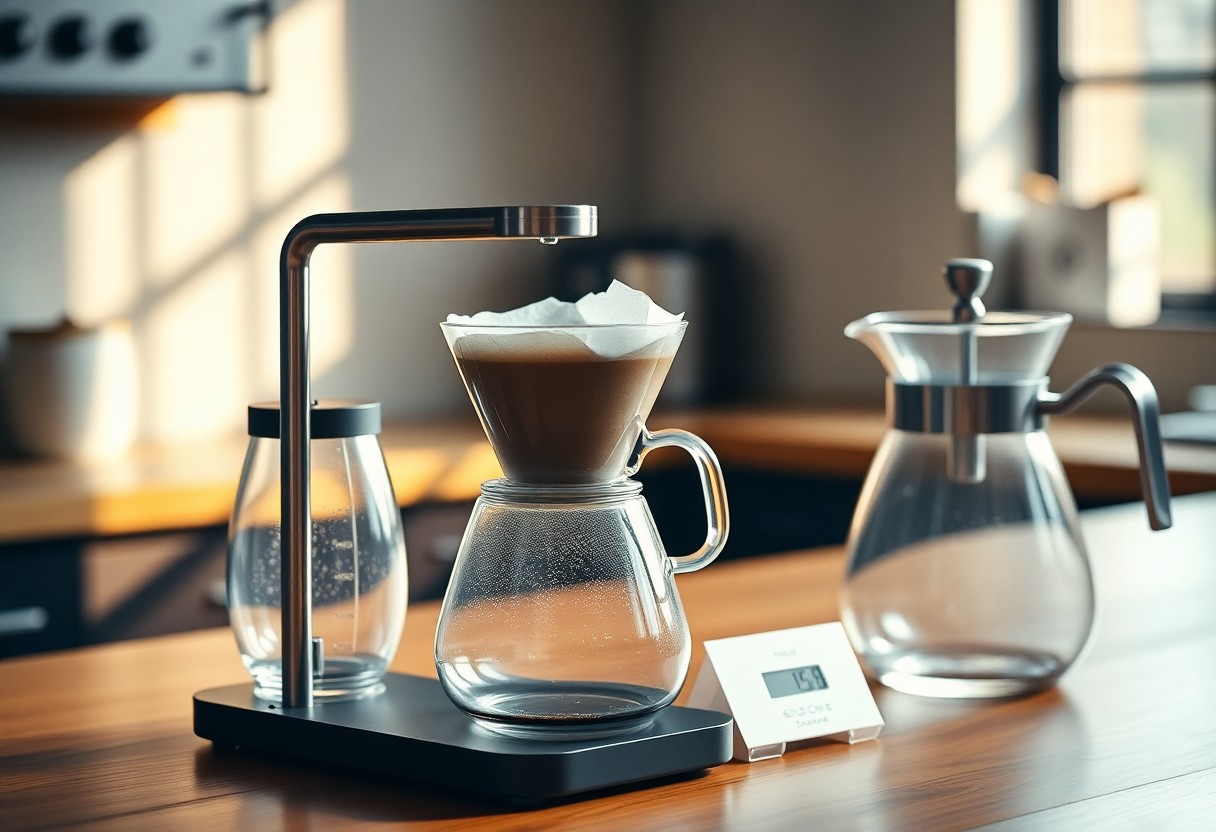
Mastering Technique: Steps to Perfect Your Pour Over
Achieving the perfect pour over coffee involves attention to detail and a series of refined techniques. Starting with the right equipment and freshly ground beans, you’ll want to focus on water temperature, blooming, and consistent pouring patterns. Each step plays a vital role in optimizing flavor extraction, ensuring that your coffee not only tastes great but also reflects your personal preferences.
Water Temperature and Brewing Time: Achieving Optimal Extraction
| Factor | Recommendation |
|---|---|
| Water Temperature | 195°F – 205°F (90°C – 96°C) |
| Brewing Time | 2.5 – 4 minutes |
Using the right water temperature helps dissolve coffee solubles efficiently, while an ideal brewing time ensures full extraction of flavor without bitterness. Aim for a water temperature between 195°F and 205°F and strive for a total brewing time between 2.5 and 4 minutes to balance sweetness and acidity.
Pouring Patterns: Techniques for Even Saturation and Flavor Balance
Your pouring technique can significantly impact the final taste of your coffee. Aiming for a steady, spiral motion allows water to saturate the coffee grounds evenly, enhancing flavor extraction and reducing channeling. Starting with a gentle bloom pour to pre-wet the grounds enables carbon dioxide to escape, leading to better saturation during subsequent pours.
To master pouring patterns, adopt a steady hand and aim for the center of the coffee bed, spiraling outwards to ensure even coverage. This technique prevents uneven extraction that can lead to both sour and bitter notes in your cup. Utilize a gooseneck kettle for precision, controlling the flow rate and direction to achieve a consistent saturation without flooding any areas. Experiment with different patterns to discover which produces your desired flavor profile and aroma, keeping in mind that practice will elevate your brewing skills to new heights.
Common Pitfalls: Navigating the Challenges of Pour Over Brewing
Even seasoned coffee aficionados can encounter challenges with pour over brewing. You may face issues like inconsistent flavors, over-extraction, or unwanted bitterness. Understanding these common pitfalls can significantly enhance your coffee experience. Pay close attention to parameters like water temperature, grind size, and brew time, as each can dramatically influence your final cup. With practice and keen observation, you can refine your technique, ensuring each brew is a delightful experience rather than a frustrating one.
Mistakes to Avoid: Over-Extraction and Under-Extraction Explained
Over-extraction occurs when the coffee grounds are in contact with water for too long or if the grind size is too fine, leading to a bitter taste. Conversely, under-extraction happens when the water flows through too quickly, resulting in a sour flavor and weak aroma. To achieve a balanced cup, aim for an extraction time of approximately 2.5 to 3.5 minutes, adjusting the grind size to suit your desired taste.
Troubleshooting: How to Fix Common Issues for Better Brews
If your coffee tastes off, consider experimenting with various factors that can influence the brewing process. Adjust your grind size to avoid under or over-extraction, aiming for a medium-coarse texture. Additionally, evaluate your water temperature; it should hover between 195°F to 205°F for optimal extraction. If your coffee is still not to your liking, review your brew time and breakup the pour to maintain a consistent flow, creating an even saturation of coffee grounds.
Pour Over Coffee in a Modern Landscape: Trends and Innovations
The pour over coffee movement has permeated contemporary beverage culture, reflecting both a desire for quality and a more intentional coffee-drinking experience. In today’s fast-paced environment, many coffee enthusiasts are trading convenience for craftsmanship, favoring the art of brewing over quick methods. With an increasing focus on sustainability and ethical sourcing, more consumers are gravitating toward pour over preparation, which allows you to savor the nuanced flavors and aromas that might otherwise go unnoticed.
The Rise of Specialty Coffee Culture: Impacts on Pour Over Popularity
As specialty coffee culture gains momentum, pour over coffee methods have risen to prominence. You find that cafes are now focusing on unique coffee origins, highlighting subtle flavor profiles, which pour over technique showcases brilliantly. This trend encourages you to explore and appreciate diverse coffee varieties, making pour over a favored option among discerning coffee lovers. Your engagement in the craft aligns with the increased consumer interest in authenticity and high-quality products.
Technology Meets Tradition: Smart Pour Over Machines on the Market
The intersection of technology and tradition is reshaping the way you experience pour over coffee. A range of smart pour over machines is emerging that automates aspects of the brewing process while still allowing you to engage with the art of coffee making. These devices can offer personalized brew settings, precise temperature control, and even app connectivity for remote brewing. Innovators are focusing on user-friendly interfaces, ensuring that whether you’re a novice or an expert, you can enjoy a consistently excellent cup of coffee with minimal effort.
These smart machines, like the Breville BEC120BSS or the Ratio Eight, are engineered to replicate the careful hand pour method while incorporating grinding and water temperature precision. For instance, the Ratio Eight features a waterfall brew technology that evenly distributes water over your coffee grounds, optimizing extraction. By integrating tech with tradition, you’re empowered to create café-quality coffee at home, simplifying the brewing process without compromising on flavor or experience.
Final Words
Conclusively, a pour-over coffee machine is an excellent choice for those who appreciate a hands-on approach to brewing your coffee. By controlling each step of the brewing process, you can unlock a depth of flavor that may be overlooked with automatic machines. With the right techniques, you can elevate your coffee experience considerably. For those interested in deepening their knowledge, you can explore the fascinating Pour Over History and Development. Embrace this method, and you’ll find that the journey of crafting your perfect cup of coffee is truly rewarding.
FAQ
Q: What is a pour-over coffee machine and how does it work?
A: A pour-over coffee machine is a manual brewing system that allows coffee enthusiasts to control each step of the brewing process for a more nuanced flavor. It typically consists of a filter holder, a coffee filter, coffee grounds, and often a carafe or mug. To brew coffee, hot water is poured over the coffee grounds in a circular motion, allowing for even extraction. The water passes through the coffee and filter, collecting brewed coffee in the container below. This method emphasizes the importance of coffee bean selection and grind size, resulting in a rich and flavorful cup.
Q: What are the benefits of using a pour-over coffee machine?
A: The main benefits of using a pour-over coffee machine include enhanced flavor control, simplicity, and the ability to experiment with different brewing parameters such as water temperature, pour rate, and grind size. This method also is often favored for its ability to bring out the unique characteristics of different coffee beans, highlighting their aromas and flavors. Additionally, the pour-over system does not require electricity, making it an excellent choice for those who appreciate a hands-on approach to brewing.
Q: What equipment do I need for pour-over coffee brewing?
A: To brew coffee using the pour-over method, you will need several vital tools: a pour-over coffee dripper (such as a Hario V60 or Chemex), coffee filters, freshly roasted coffee beans, a grinder (for optimal flavor, use a burr grinder), a kettle (preferably with a gooseneck spout for precise pouring), and a scale to measure the coffee and water accurately. Optional equipment includes a timer to monitor brewing time and a thermometer to check water temperature.
Q: How do I clean and maintain my pour-over coffee machine?
A: Cleaning your pour-over coffee setup is relatively straightforward. After each brew, discard the used coffee grounds and filter. Rinse the dripper and carafe with warm water to remove any coffee oils and residues. Periodically, you can wash the components with mild soap and water. If you use a glass carafe, take care to avoid thermal shock by avoiding sudden temperature changes. Regularly inspect your equipment for wear and replace parts as needed to maintain optimal performance.
Q: Can I use any type of coffee in a pour-over machine?
A: Yes, you can use various types of coffee beans in a pour-over machine, but it is important to consider the grind size, roast level, and freshness for the best results. Light to medium roasts often shine with pour-over methods, allowing unique flavors to present themselves, while darker roasts can produce a bolder taste. For optimal extraction, use coffee grounds that are medium-fine to medium in size. Freshly roasted beans will provide the most flavorful experience, so aim to use coffee that has been roasted within the last few weeks.

